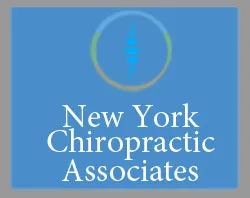- posted: Jul. 19, 2018
Natural Pain Relief without Drugs
Aches, pains, migraines, sore muscles, and so on. Just about everyone experiences pain sometimes. And what’s the most common way to deal with it? Drugs. Most people don’t think twice about curbing pain with pills, be they over-the-counter or prescription.
While painkillers may not seem like a big deal, they can, over time, erode health in a variety of insidious ways. For example, ibuprofen can trigger ulcers, gut distress, and raise blood pressure. Aspirin can, even at low doses, cause intestinal bleeding — and we all know that opioid painkillers are highly addictive and, increasingly, lethal.
My take: People who think nothing of frequently popping painkillers are playing with fire. Instead, I recommend taking a healthier, more holistic approach to pain management. Here are a few of my favorite pain remedies — no stomach problems, no brain fog, less pain, and better health.
Find a Chiropractor with Healing Hands
You know what can also reduce pain without drugs? Chiropractic physicians— namely practitioners who help heal hurting bodies with hands-on techniques. Regular chiropractic spinal adjustments are helpful in relaxing compressed joints and muscle spasm. Chiropractic care is a safe and healthy way to prevent pain and to treat it during flare-ups. Spinal adjustments encourage better circulation of blood and nutrients throughout the body to relieve pain and inflammation. Spinal adjustments not only decompresses spinal joints and relaxes muscles , but encourages the release of endorphins — the body’s naturally occurring painkillers — into the bloodstream.
Calm the Mind — and Body
Utilize meditation to calm the mind and the body while delivering powerful pain-relieving chemicals to the brain. Another fantastic pain-fighter.
Supplement Your Body’s Pain-Suppressing Power
Add a few supplements to your pain-fighting arsenal in order to tame inflammation and support overall health. With reinforcements like a daily regimen of omega fatty acids, Vitamin D and probiotics you will cover much of the pain-prevention waterfront — and feel good to boot (without the pharmaceutical side effects).
Push Pain Off Your Plate
Since pain and inflammation tend to go hand in hand, you can help ease pain by laying off inflammatory foods. Topping the list of pain ‘flamers: sugar, gluten, refined flours, processed foods, and sugary beverages. When it comes to alcohol, the occasional glass of (preferably organic) wine at dinner shouldn’t cause instant agony, but the less alcohol you drink, the better, particularly if you take any OTC drugs, are on medications, or have chronic pain, which can be made worse with alcohol withdrawal.
Eat More Pain-Tamers
Not surprisingly, fresh, whole foods from organic sources or farmer’s markets will have more of the pain-taming nutrients and compounds in ‘em than pain-inflaming, processed Frankenfoods. When pain is a frequent problem, what you put on your plate becomes even more important. Cooling the flames of inflammation with help from sulfur-rich veggies is key. Add flavorful garlic, onions, scallions and chives to dishes, as well as cruciferous veggies like broccoli and cauliflower for an even bigger anti-inflammatory benefit.
Hit the Spice Rack
Yet another tasty way to tame pain. You’ll find any number of anti-inflammatory ingredients that can soothe, help reduce swelling, and prevent pain from escalating. Among my favorite spices with medicinal benefits that are easy to incorporate at mealtime:
- Freshly ground black pepper adds a punch of flavor and is also a terrific healing-helper because of its anti-inflammatory power.
- Ginger adds a tasty kick to meals and can help kick migraines out (almost as effective as the pricey migraine meds that can trigger dizziness and indigestion).
- Turmeric’s main compound curcumin has been shown to be as effective as ibuprofen for relieving pain — minus the gut damage OTCs can bring.
- Peppermint activates anti-pain colonic pathways according to a 2011 study, making it helpful for those with IBS. It also interferes with the release of prostaglandins, key contributors to menstrual pain.
Not big on spices? Then consider black pepper, ginger, turmeric and/or peppermint in supplement form, but be sure to check first with your doc to rule out any contraindications with prescription drugs you are taking or to look into any other concerns or conditions you may have.
Get Moving
For those with chronic or intermittent pain, one more way to diffuse it is with exercise. If you’re really having a tough time of it, a strenuous gym routine may not be feasible, but some type of movement is. Among the easiest places to start is with Tai Chi, the super-low-impact, a Yoga class that gently stretches and strengthens muscles with meditative moves and controlled breathing. Numerous studies have shown that Tai Chi, despite its relaxed pace, is highly effective for providing pain relief and improving mood (a big plus when pain is an issue).
